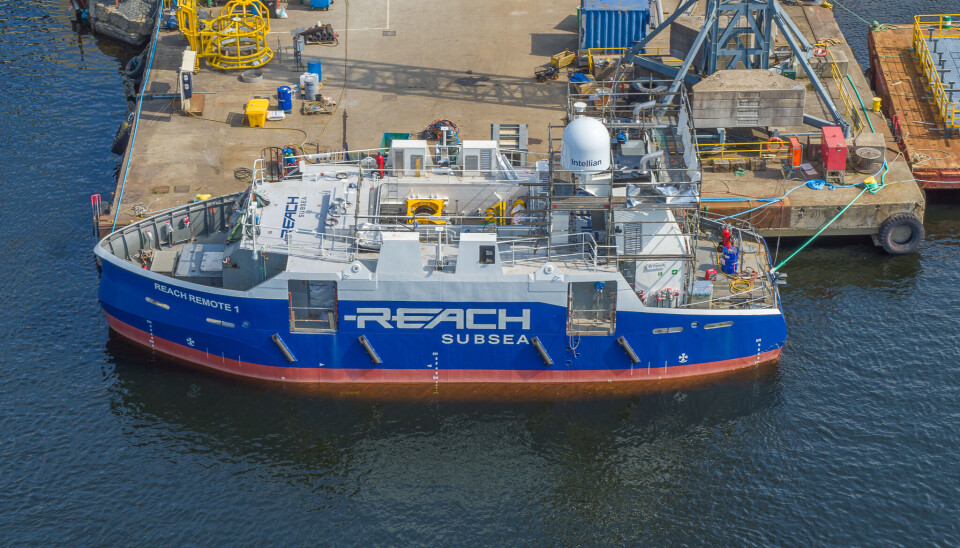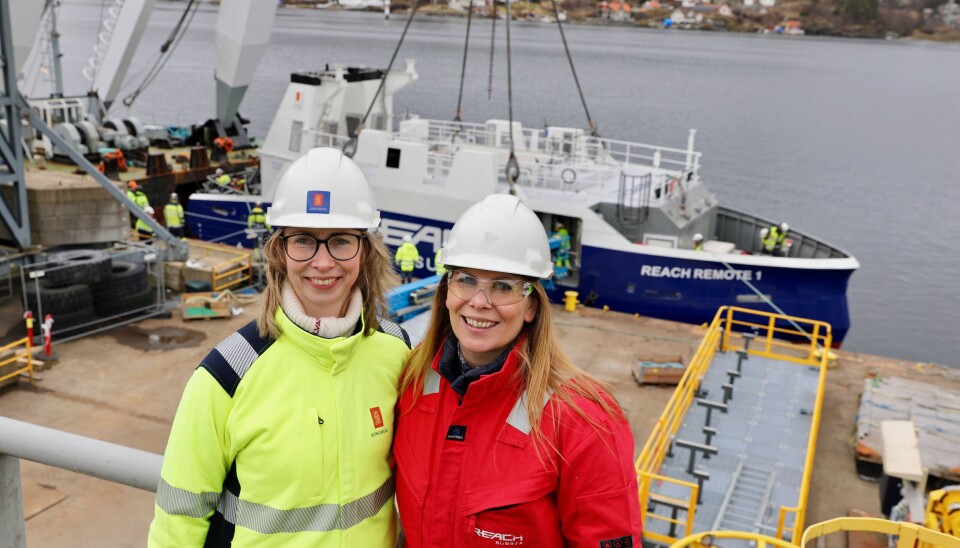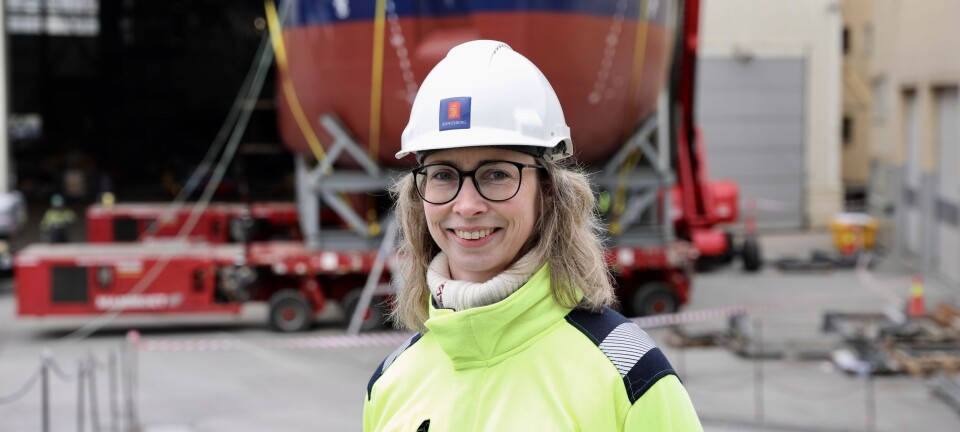
"This project could be a game changer"
Senior project manager in Kongsberg, Marthe Kristine Sand, has been involved in the "Reach Remote" project since 2020. Now both vessels have been launched and she thinks it is exciting to see them on the water.
“Reach Remote” was quite a revolutionary idea, which turned into a research collaboration between NTNU, SINTEF and industry partners, truly a cross-industry project.
“As an engineer, it's fun to see that it has really materialised, and that we now have two vessels on the water! It is incredible that something that starts as an exciting idea and a research collaboration across different players, both in industry, but also with academia, is now a reality,” states Marthe Kristine Sand.
She talks with enthusiasm about the collaboration with Reach and the other partners throughout the project, where everyone has had a desire to achieve something new.
“Working together to find the best technical solution, and then bringing it to life, I think that is one of the success factors.”
Compared to many other projects Kongsberg Maritime has been involved in, the Reach Remote project stands out. The technology company has acted as a turnkey supplier and is responsible for delivering a finished product to Reach Subsea. Which leads to an increased responsibility for the company.
“In the Reach project, we really get to make use of the technology in the KONGSBERG system. Because there is a lot to be integrated. It is a 24-metre vessel, but it is packed with technology. So, getting all this technology to work together, and integrating the systems together, that is what is demanding, but also where Kongsberg Maritime has its advantage as a clear technology supplier with the expertise and experience to deliver on this type of complex project,” says Sand.
“As a result, we have had to use resources from different parts of the company, something that has been completely essential in order to succeed with such a technology-intensive project - the launch and recovery system, vessel control systems, positioning system, navigation, automation, energy storage and energy control systems, sensor and underwater systems and the situational awareness system.

“And not least ship design and engineering. Kongsberg Maritime has designed the ship, created the design philosophy and both basic and detailed engineering. So, in a way, we have the whole KONGSBERG family with us. That is what is both demanding, but also what makes it exciting. As project manager, it is important to ensure that we are united, and with particular focus on the interfaces between the different areas and ensure that we are all aligned and have a common goal, making this into an integrated solution.”
Step-by-step approach
In the project, they have used conventional technology where possible, and introduced new technology where it has been required. The challenge on such a ship is that there are no personnel on board, which means that sensors have to carry out those jobs instead. The Reach Remote project benefits from the company's experience from autonomy projects, both research projects and implementation projects. Kongsberg is a large part of both the "Yara Birkeland" project and Asko's vessels "Therese" and "Marit" which sail on the Oslofjord.
“We have had a step-by-step approach to how we introduce the technology further, which is a success factor, and which is based on our experience as a technology supplier. And then more and more remotely controlled and autonomous technology is introduced as the future steps are taken.”
Since 2019, a lot has happened in the world. The pandemic and subsequent delivery problems have been commonplace for the maritime industry. In addition came the war in Ukraine.
Marthe Kristine Sand believes that Teams has worked very well on this project. With people from different departments in different locations, it would have been difficult to get everyone together in one office location anyway.

Although the Ship of The Year is not one of the largest with its 24 metres, it is, as mentioned, packed with new technology and hugely complex. What is usually found on a larger ship is now in a smaller vessel. The exception is that everything required for a crew to be physically on board is gone. No toilets, rescue systems, cabins, mess, etc.
That is precisely why it is such a great achievement to be successful with the project.
“It would have been easier to get space for all the technology if it was a large vessel. Because it is really packed with technology. We also have a lot of redundancy in the systems, because there is no one on board who can fix something that doesn't work.”
But it is not just within Kongsberg Maritime that several departments have been involved. In addition, it has collaborated with Reach Subsea, Massterly, Trosvik, Kystdesign, DNV, the Norwegian Maritime Authority and others. Despite this, according to Sand, there has been a positive collaborative climate throughout the project.
“We have had a common goal of where we want to be and how we are going to get there. Then we had to ensure that we communicated well and had a good dialogue along the way. And that we ensured that we agreed in relation to that end goal, both on the delivery of the vessels that we are now rapidly approaching, but also on the road ahead, because it is not finished when the ship is out sailing. There is also a significant development that will take place in the future.”
A fantastic project
She highlights the advantage of an open culture where they have been open about the challenges encountered along the way.
“This is technology-intensive and ground-breaking, and here we have had the opportunity to work together to really make this happen. Everyone then sees that we have to have an openness that allows us to see and identify the challenges we have together, but also how we can find solutions.”
At the beginning of June, the jury was able to present the three nominated projects that fought for the Ship of The Year award, and now Reach Remote has won.
Were you surprised when this vessel won?
“No, because I think this is a fantastic project. So, I think it was the right choice,” says Sand with a smile.
“I believe that this has the potential to change the way we work, and how this type of task is solved offshore. It will be very exciting to see what this type of task looks like a few years from now.”
She believes the potential is significant and that this ground-breaking project could become a game changer for how this type of task is solved.
“How we manage to integrate all these different systems and make them work together is very exciting. And from a technology point of view, it is extra impressive to see how we manage to fit it into a 24-metre-long vessel.
